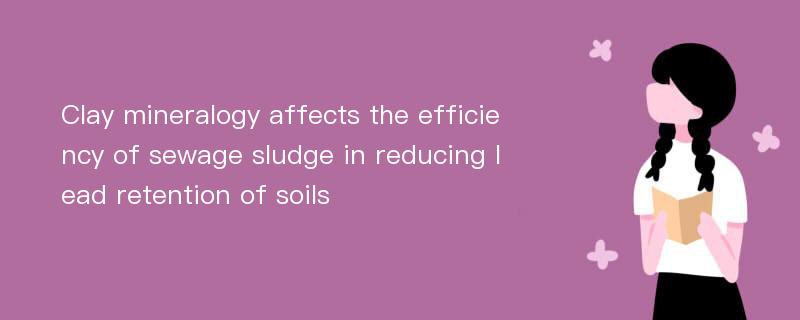
论文摘要
Recent studies have shown the feasibility of using of sewage sludge for the remediation of heavy metal-contaminated soils. However, there are no researches to check the influence of clay mineralogy on the efficiency of the sewage sludge to remediation of contaminated soils with heavy metals. For this purpose, we use two contrasting soils:Oxisol rich in hematite and gibbsite and Inceptisol rich in kaolinite. Thermal-treated sludge was applied to Pb-contaminated soil samples and incubated for 40 days. The soil samples were submitted to seven sequential extractions: soluble-Pb, exchangeable-Pb,precipitated-Pb, organic matter-Pb, Fe and Mn oxide-Pb, gibbsite and kaolinite-Pb, and residual-Pb. The reduction of soluble Pb forms by thermal sludge application was more pronounced in the Oxisol than in the Inceptisol because of the conversion of soluble-Pb into more stable forms, such as precipitated-Pb and oxides-Pb. For Inceptisol was necessary to apply high rates of thermal sludge to reach a significant reduction in soluble-Pb contents. The addition of humic fractions in the form of thermal sludge increased the concentration of organic matter-Pb. In confined area, the use of sewage sludge to reduce the heavy metals levels in soils must be better considered, mainly in more weathered soils.
论文目录
文章来源
类型: 期刊论文
作者: Giovana Clarice Poggere,Vander Freitas Melo,Beatriz Monte Serrat,Ant?nio Salvio Mangrich,Amanda Araújo Fran?a,Rodrigo Stuart Corrêa,Julierme Zimmer Barbosa
来源: Journal of Environmental Sciences 2019年06期
年度: 2019
分类: 工程科技Ⅰ辑
专业: 环境科学与资源利用
单位: Soil Science and Agricultural Engineering Department, Federal University of Paraná State,Chemistry Department, Federal University of Paraná State,Centro Politécnico
分类号: X703;X53
页码: 45-57
总页数: 13
文件大小: 806K
下载量: 24
